You may not find this terribly rewarding unless you're included here, so this is a good time for casual and random browsers to turn back before they get too caught up in the sweep and majesty of the proceedings and can't let go.
Views of Fribourg, Switzerland, on a grey afternoon
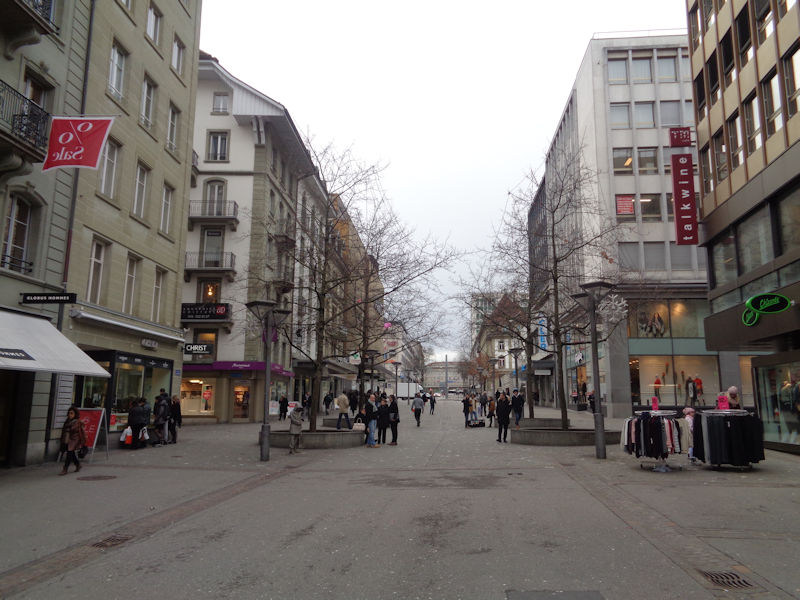
We're on the Rue de Romont in Fribourg, 10 January 2018, looking back towards the main train station, but in fact we're bound the other way, down towards the historic city centre.
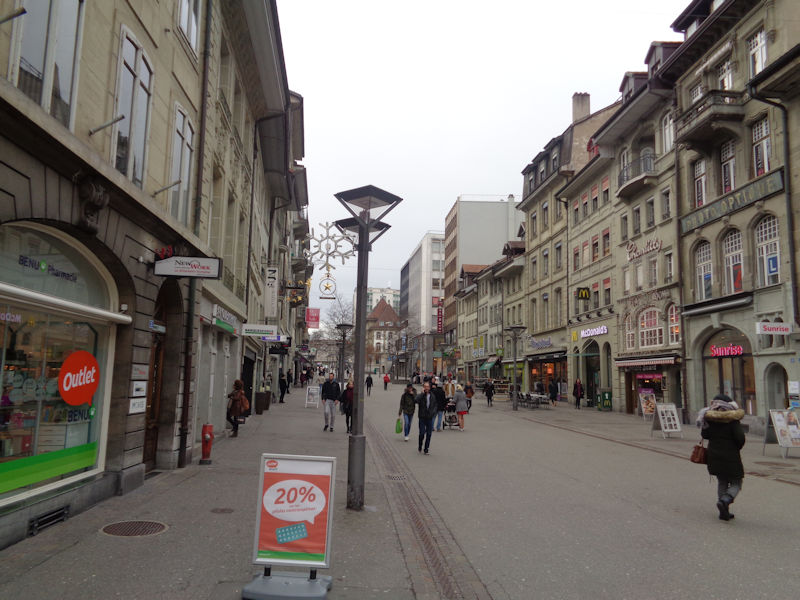
Still the Rue de Romont (named for a village 20km to the south). We're stopped in the Hotel Alpha, not bad at all, just 500m out the other side of the train station; one of our party needs to get a very early train to Zürich tomorrow morning, so we've knocked off half the journey in advance.
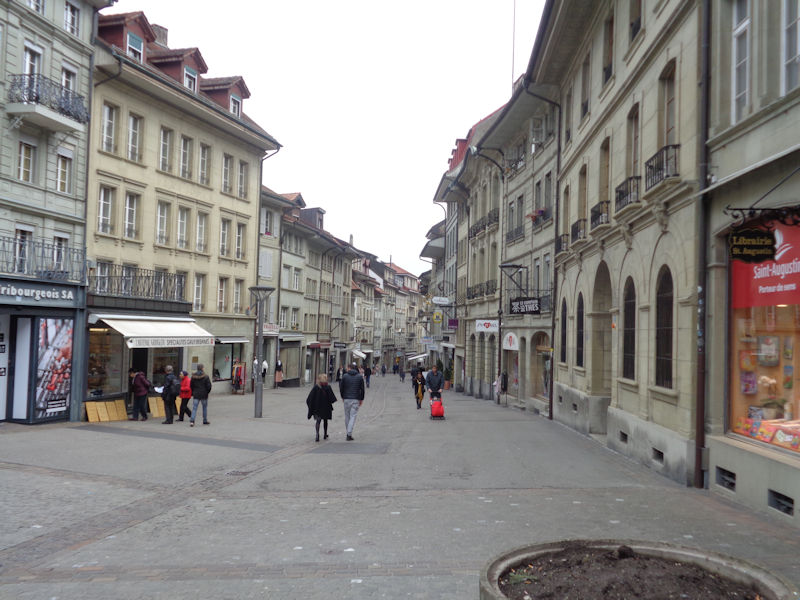
And now we're starting down the hill: the Rue de Romont has become the Rue de Lausanne. Few Neolithic or Roman remains have been found near Fribourg, but its naturally defensible location with the cliffs of the river Sarine protecting it on three sides attracted the Duke of Zähringen, who founded the city here in 1157. Duke Berthold IV, whose family came from the Zähringen castle near Freiburg in southwestern Germany in the 11th century, was a follower of Frederick Barbarossa and held extensive family lands in western Switzerland as well as in Germany.
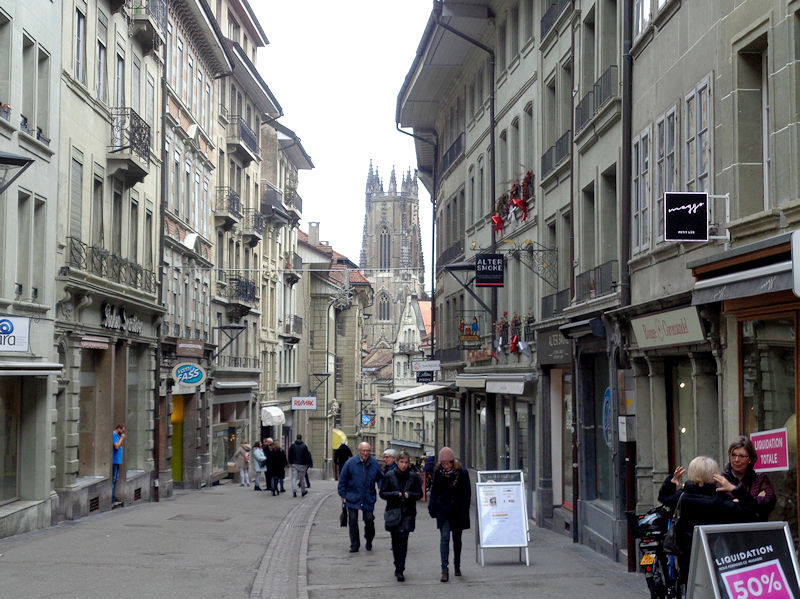
The tower of the Cathedral of St Nicholas over the rooftops
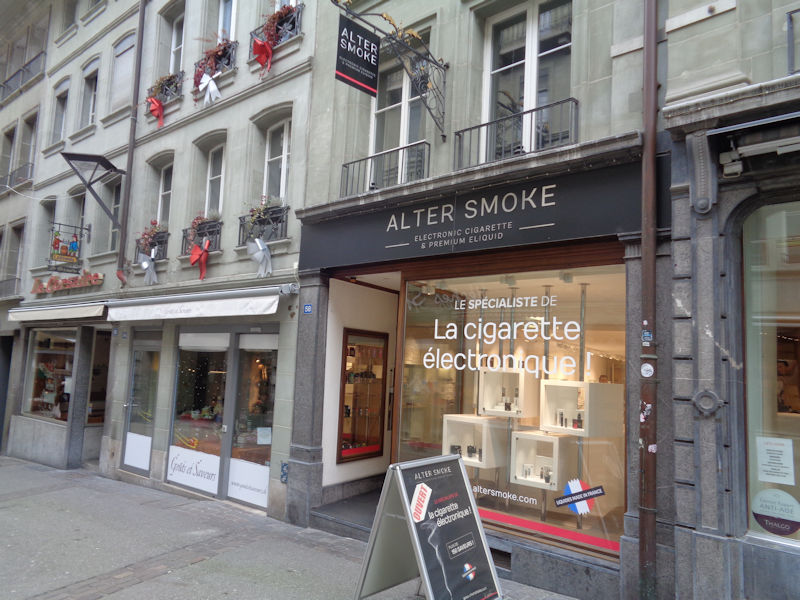
The future is already upon us.
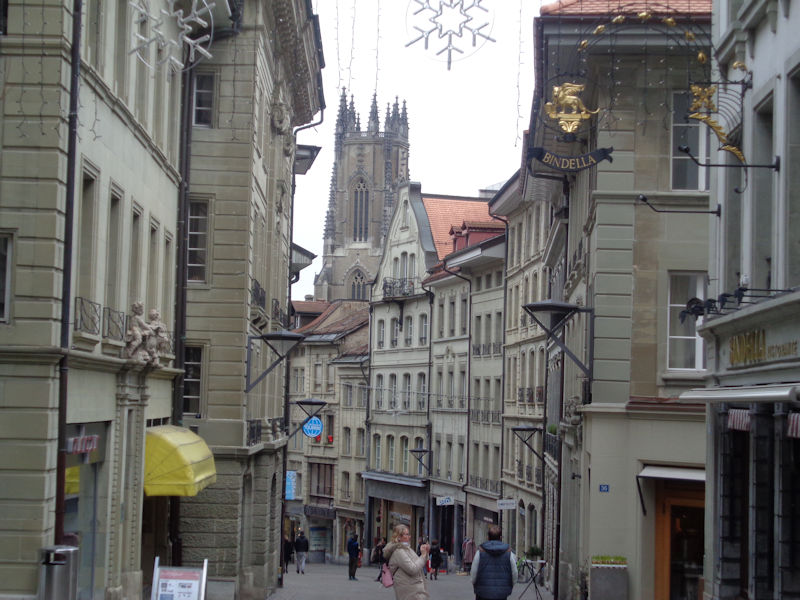
Still in the Rue de Lausanne. When the Zähringens died out in 1218, the city and its territories passed to the powerful Kyburg family of northeastern Switzerland, and after that male line failed in 1263, in 1277 it was sold to the Habsburgs. The city prospered and expanded in the 12th to 14th century and became a Free Imperial City in the late 15th century. The city and by then the canton of Fribourg joined the Swiss Confederation in 1481.
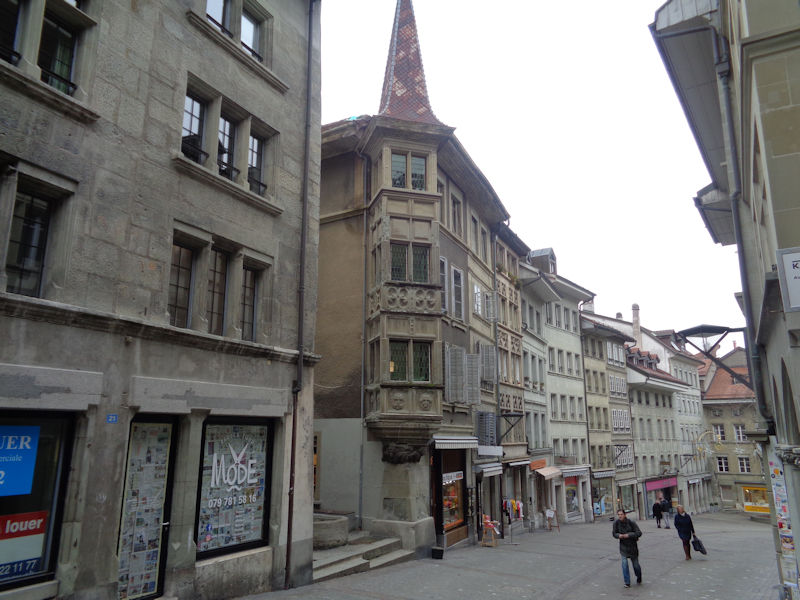
Reminiscent of the corner oriel of the Maison Pfister in Colmar. Fribourg, with its many monasteries dating from the 13th century, remained a Catholic enclave surrounded by newly Protestant territories in the 16th century Reformation, and as such attracted at least five more monasteries and became a European centre of Counter-Reformation inspiration. The home of the Catholic Bishop of Protestant Lausanne was moved here in 1613, and it's now the seat of the Diocese of 'Lausanne, Geneva and Fribourg'.
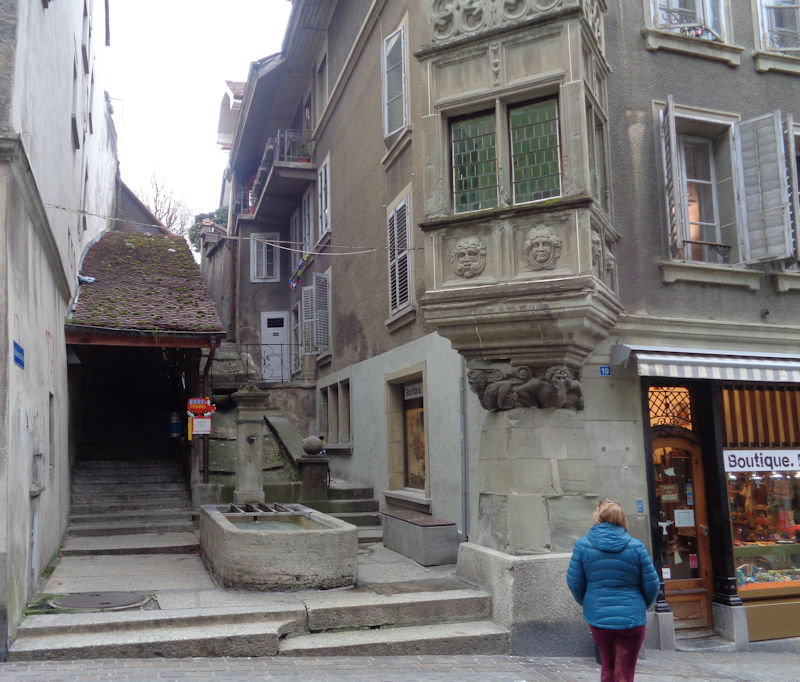
With the little red Pedibus sign (a universal system whereby someone, usually a parent, walks a crowd of kids to school each day, picking them up and dropping them off at scheduled times)
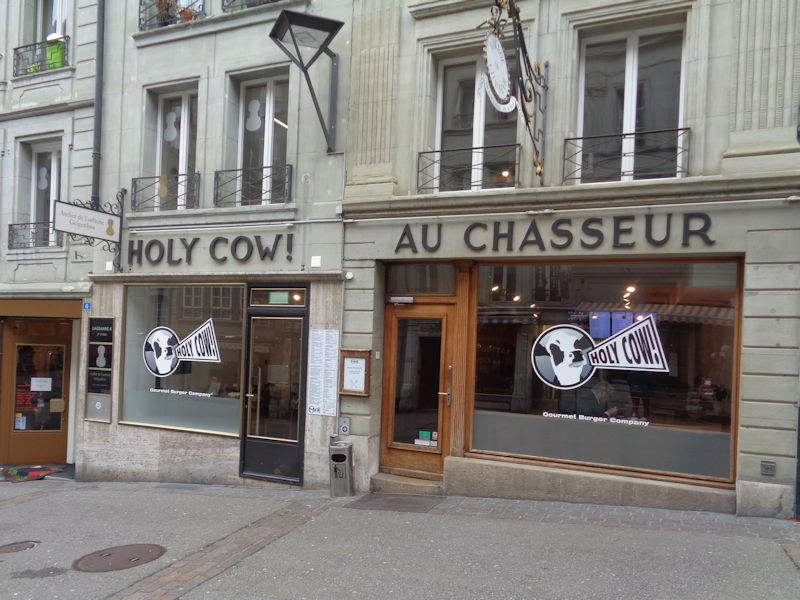
The Gourmet Burger Company
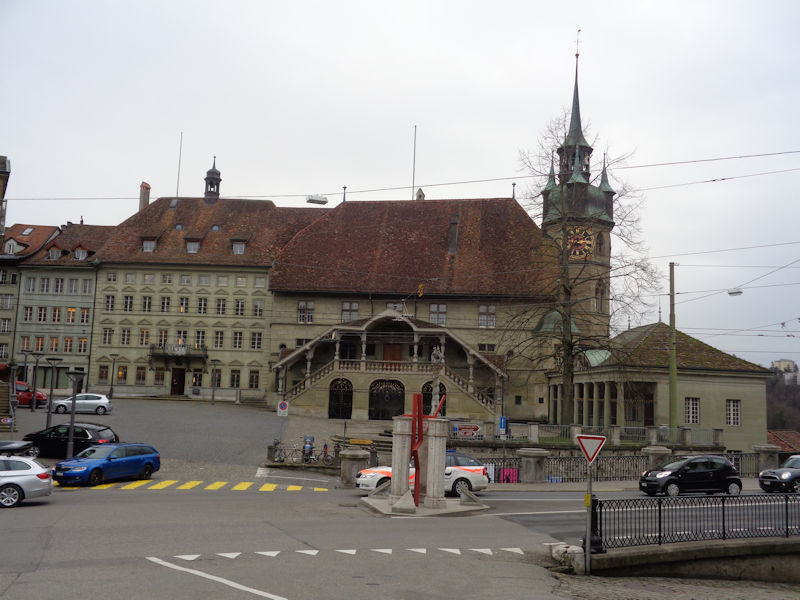
The Rue de Lausanne merges into the Place de l'Hôtel de Ville, with the city government offices, and with (behind the yield sign) the 'Tilleul de Morat', the linden tree planted in 1476 to commemorate the runner who ran to announce the Swiss victory over Charles the Bold's Burgundian army and collapsed here from his exertions. The tree is said to be descended from the linden twig the earnest gentleman had been wearing in his hat.
.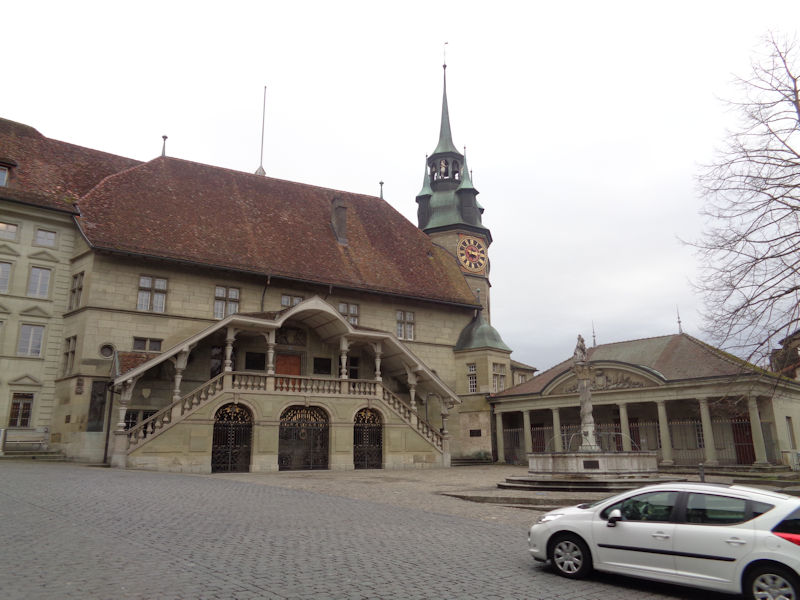
The City Hall. As a seriously Catholic canton, Fribourg was one of the leaders, with Lucerne, of the seven Catholic cantons that attempted to secede from the majority Protestant Switzerland in the 'Sonderbund War' of 1845, which was almost bloodlessly put down by General Dufour in 1848. Dufour's solicitous care for the wounded on both sides was an inspiration for the founding of the International Red Cross, with his participation, in Geneva in 1863.
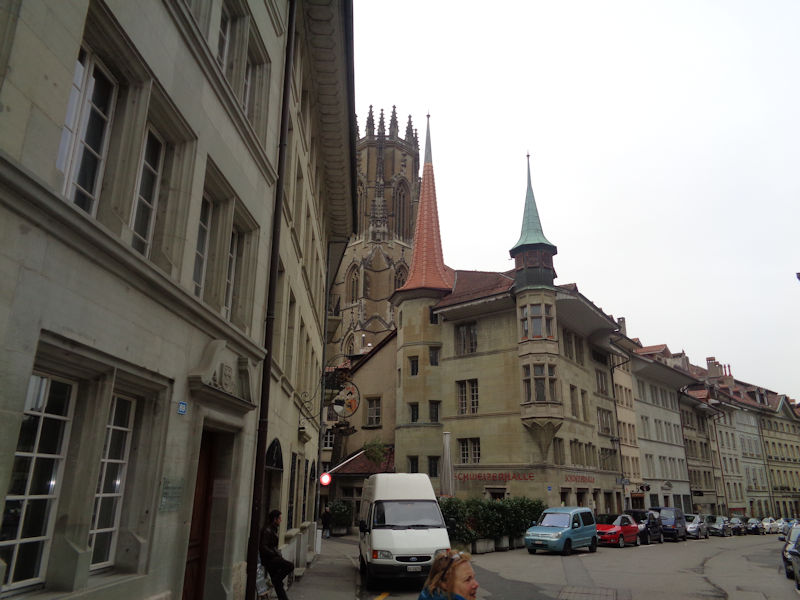
We're keeping the cathedral tower in sight as we wander about.
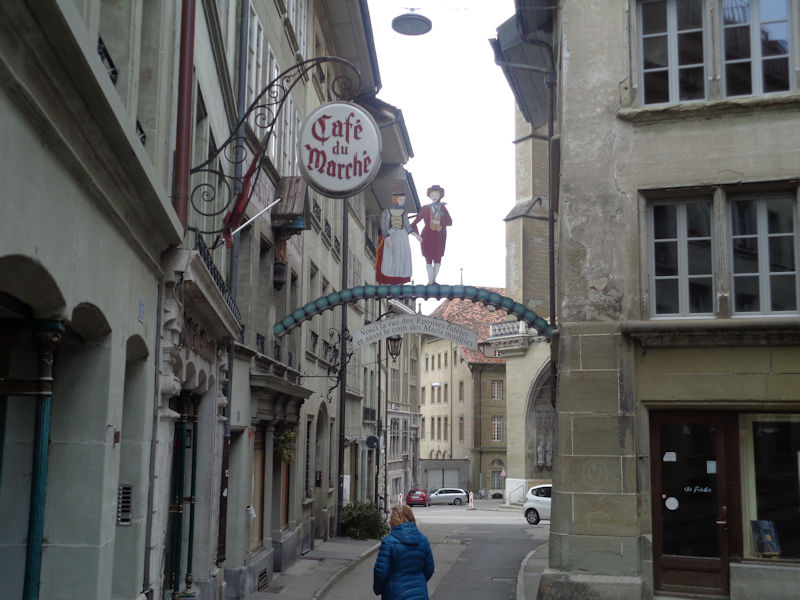
Towards the cathedral square, down the 'Street of Faithful Spouses'
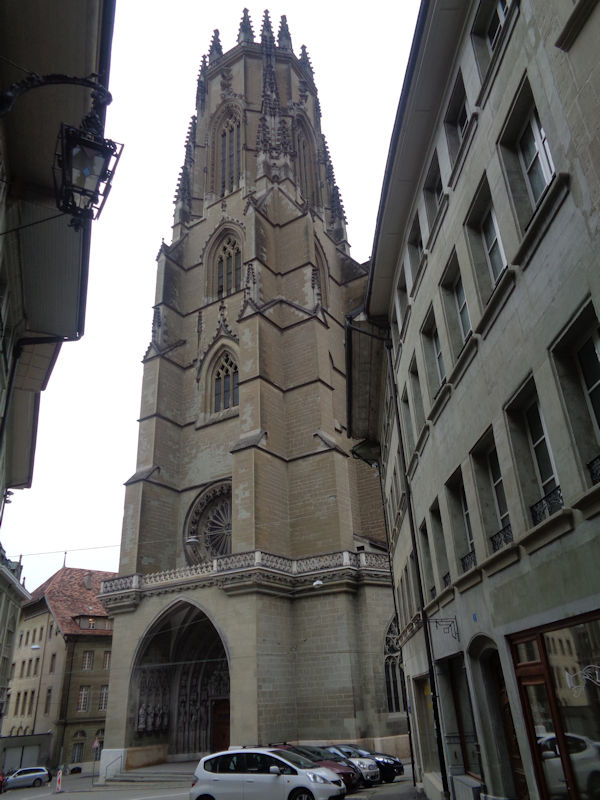
The 74m tower of the Cathedral of St Nicholas, dating from 1490

The west portal
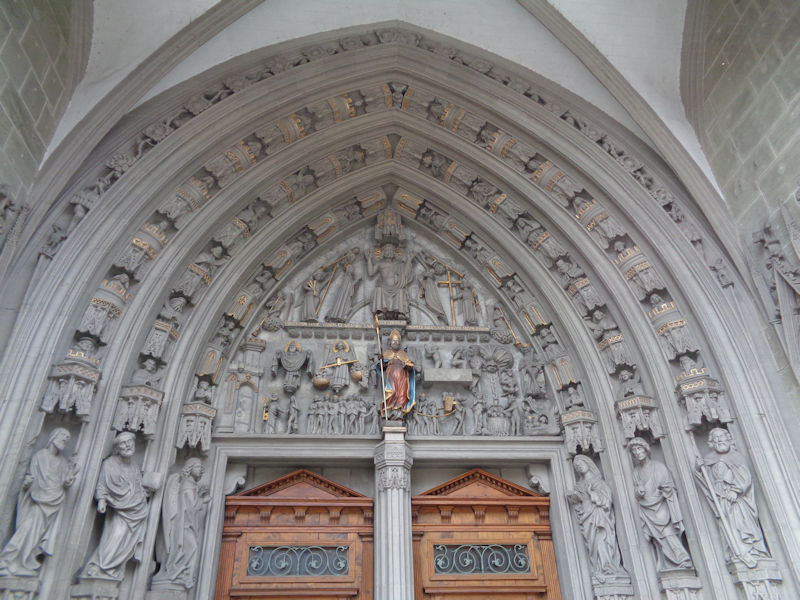
In the tympanum over the front doors, the Last Judgment, with the angel weighing souls in a balance, the relieved 'virtuous' being led off to our left by Peter with his golden key, and the Losers being scurried off to the right by beasts and ghouls. Colorfully in front of all that, St Nicholas of Myra, all from the late 14th century.
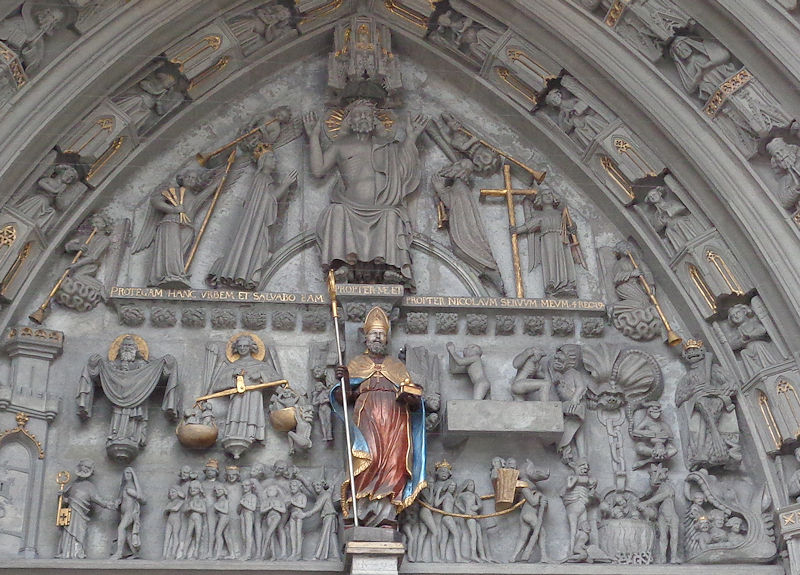
A zoom of the Last Judgment. Be well prepared.
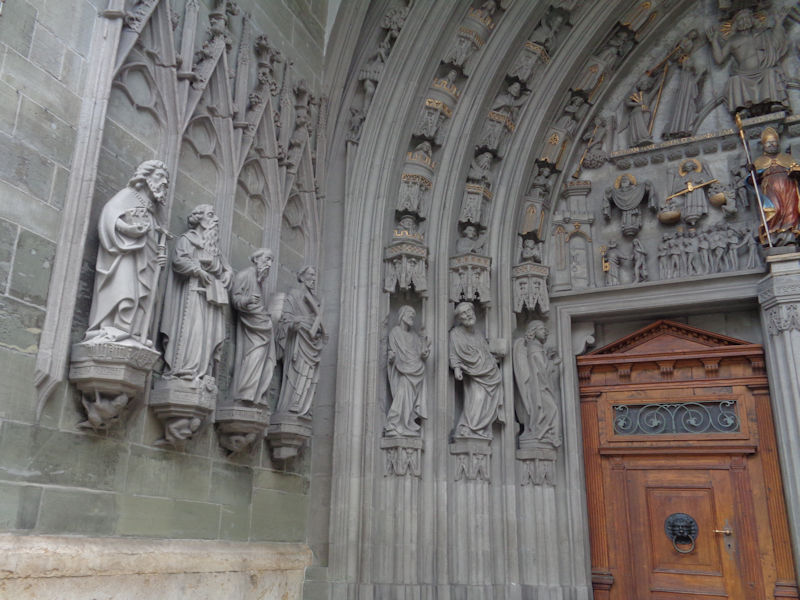
To the left, six apostles and an annunciating angel . . .
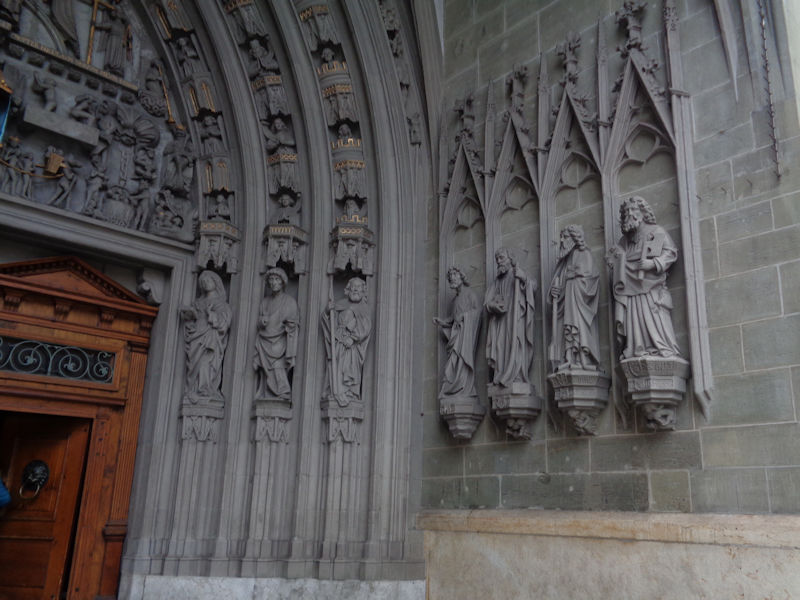
. . . and on the right, welcoming the annunciating angel, and six more apostles, all from the 15th century.
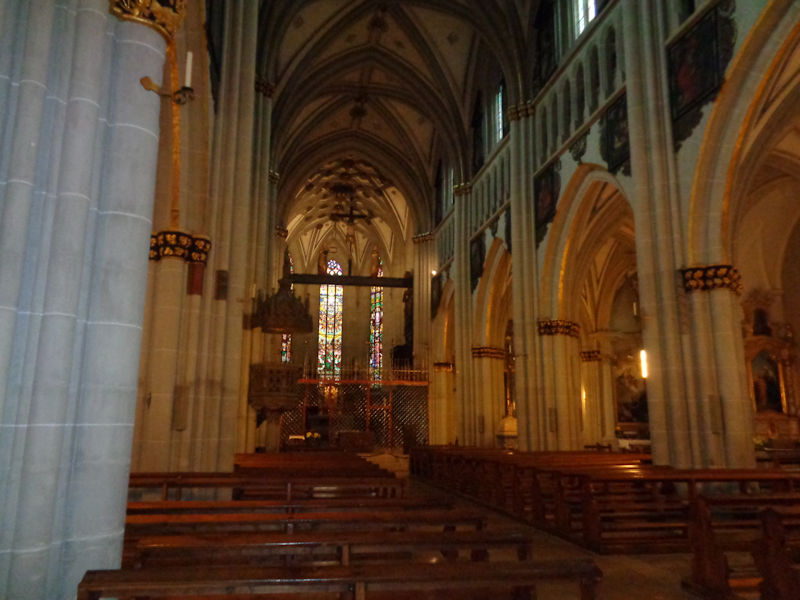
The nave with five bays -- construction of the cathedral began as a parish church in 1283 and finished in about 1430; it was elevated to a collegiate church in 1512 and to the status of cathedral in 1945. It is presently the seat of the Diocese of Lausanne, Geneva and Fribourg.
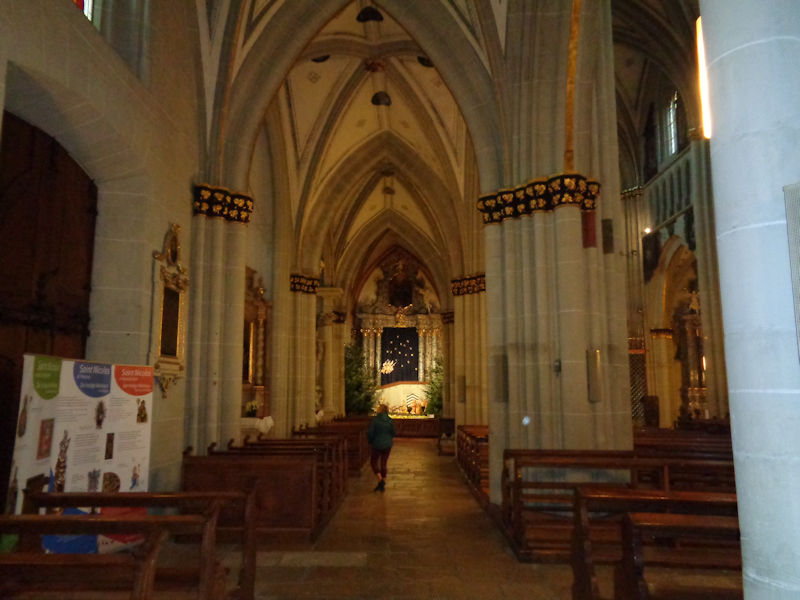
The left aisle
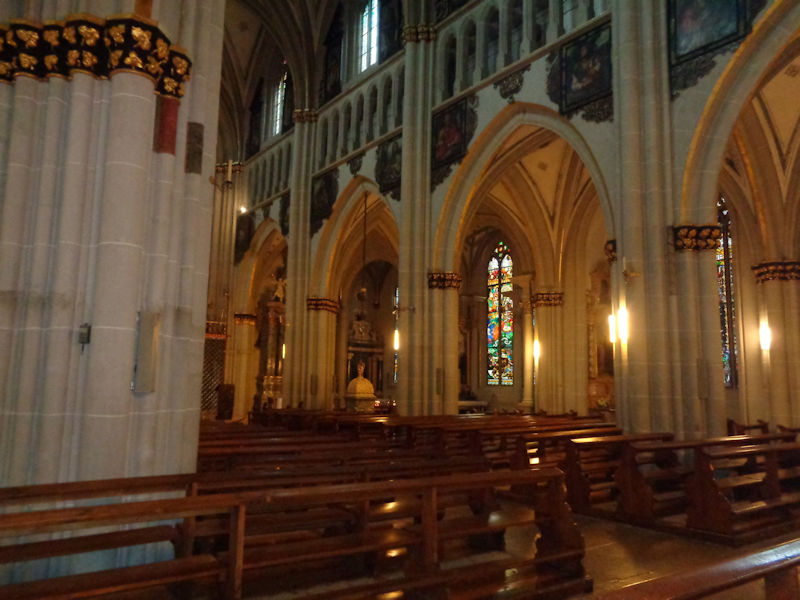
The right aisle across the way
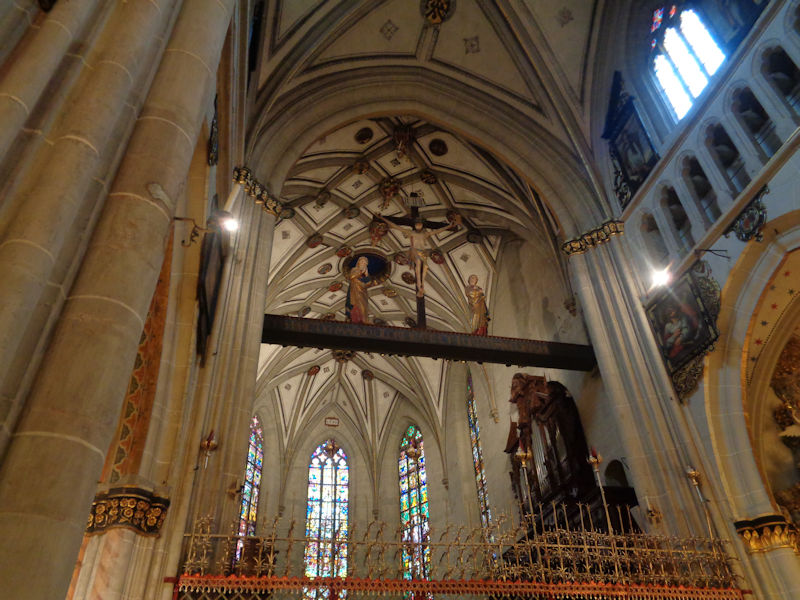
The apse with its choir gate from 1466
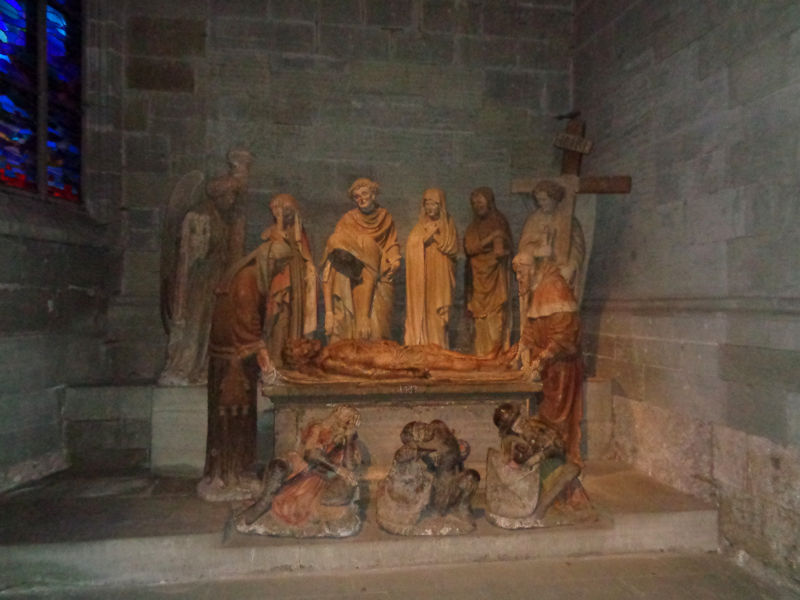
In the Chapel of St Sepulchre, the burial of Christ in figures of local sandstone, or molasse, 1433
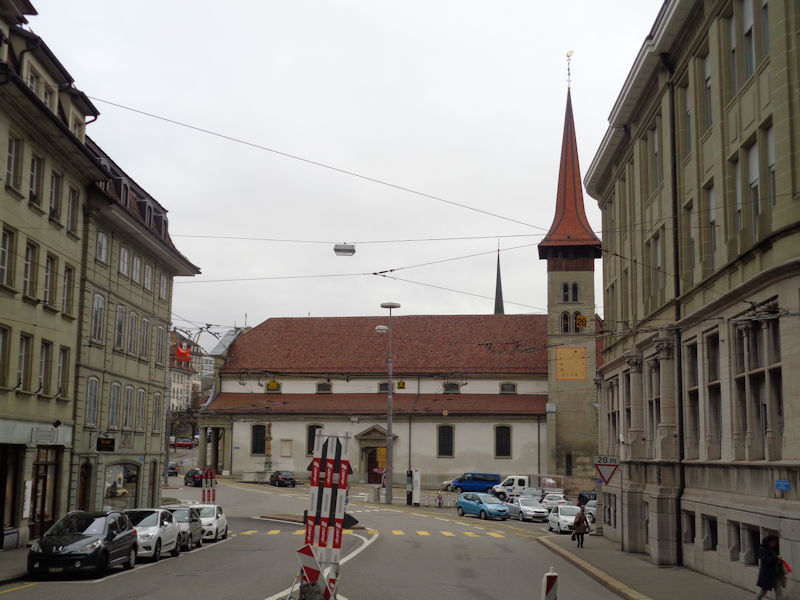
Out the front door of the cathedral, facing the Basilica of Notre-Dame of Fribourg in the Place de Notre-Dame
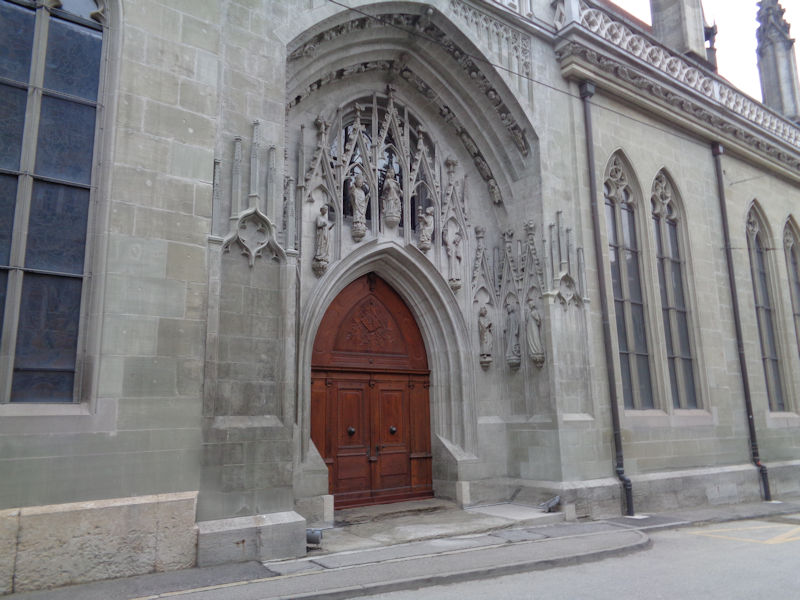
The south door of the cathedral, with 16th century statues
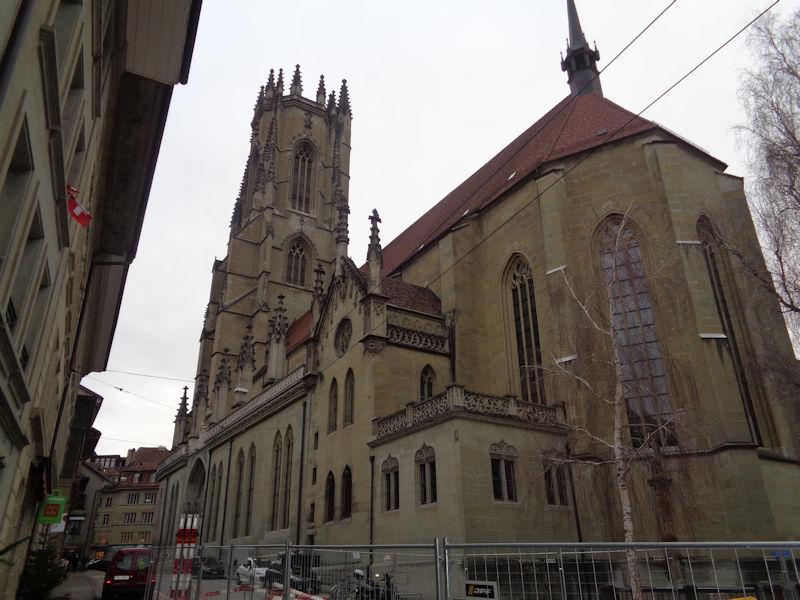
The apse end
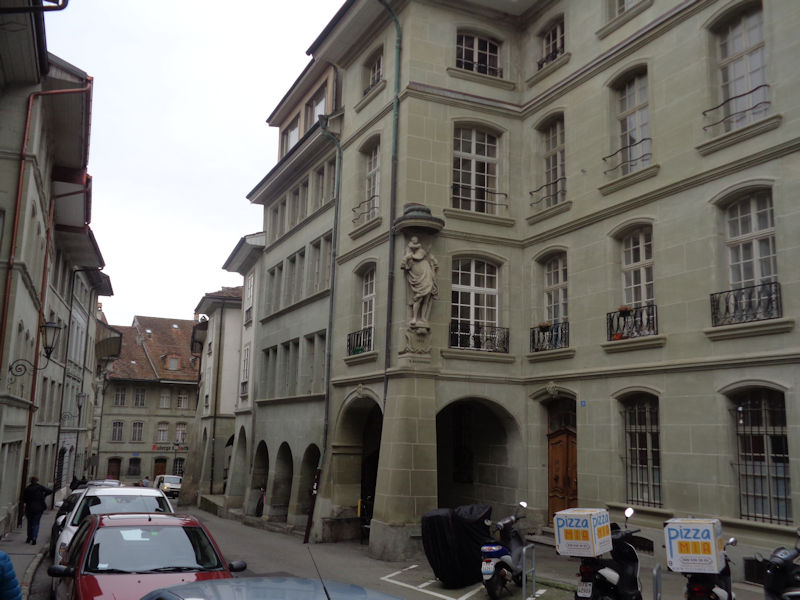
Down the Grand-Rue towards the river
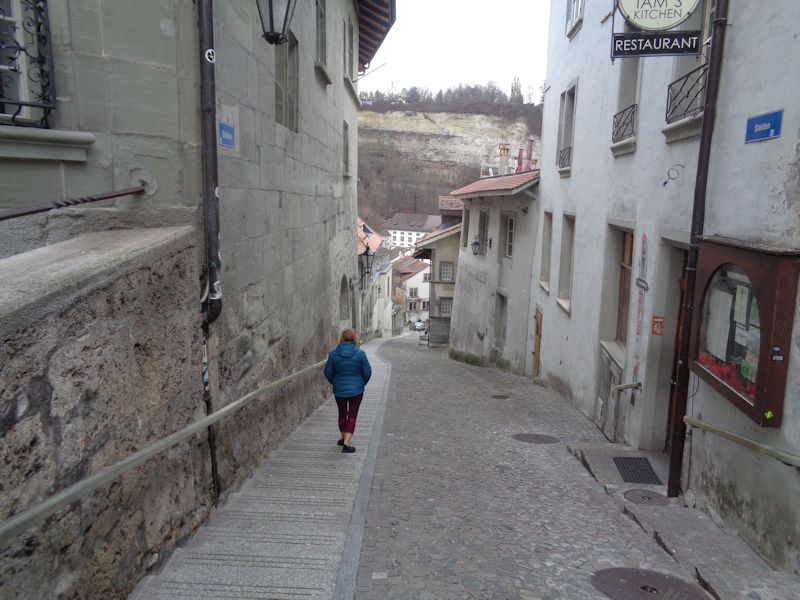
Steeply down the Stalden . . .
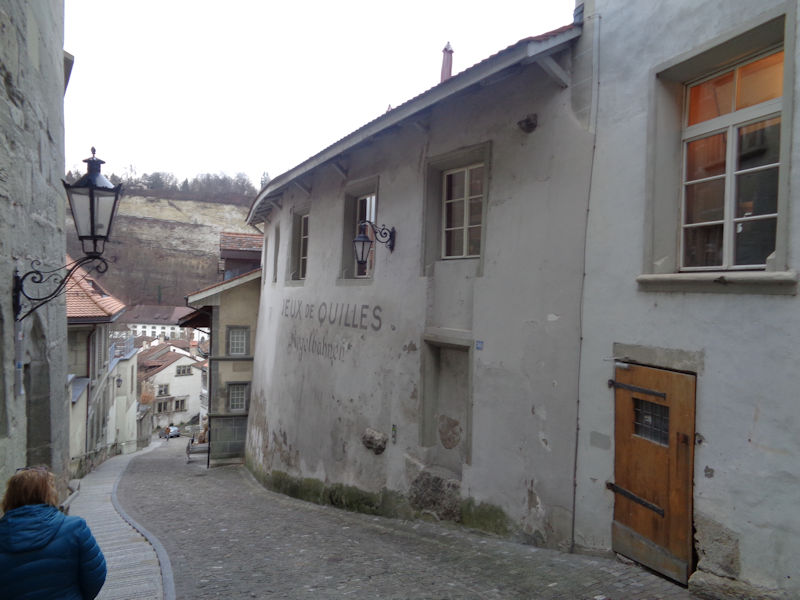
. . . past the bowling alley.
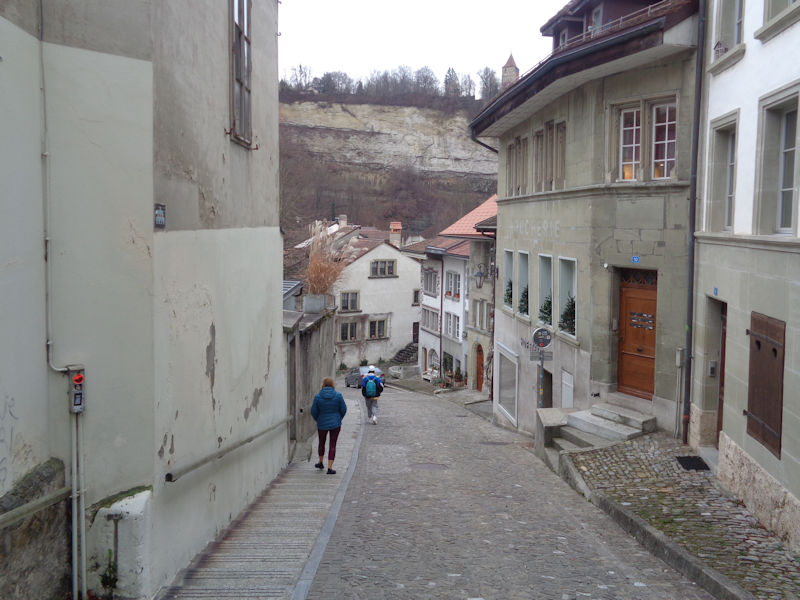
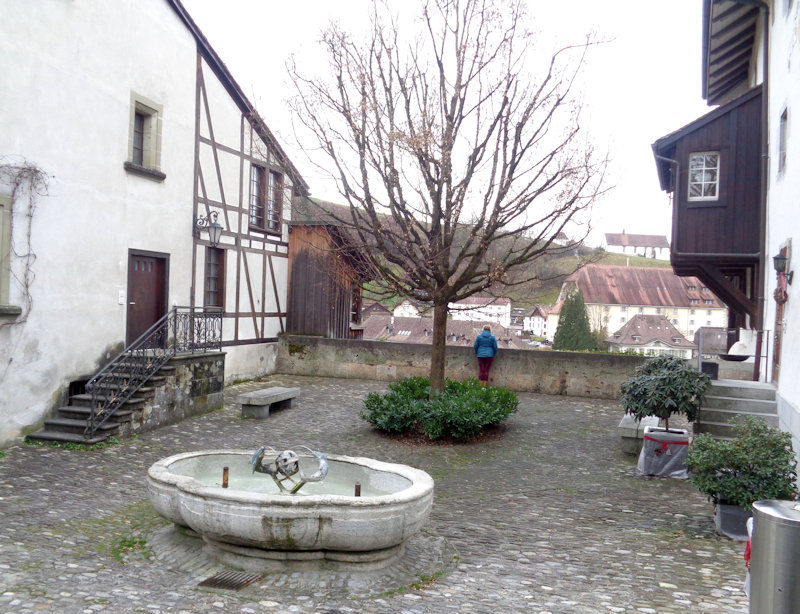
A lookout point over the river
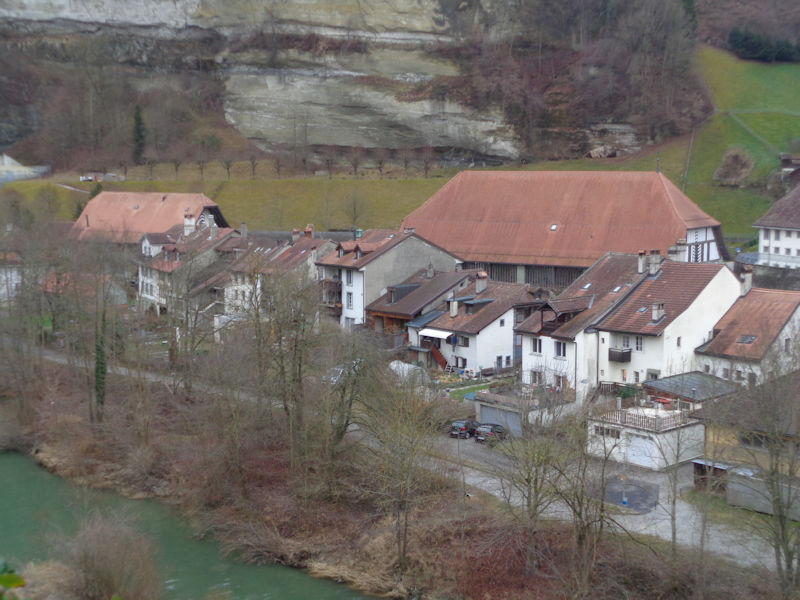
The Planche-Inférieure across the river
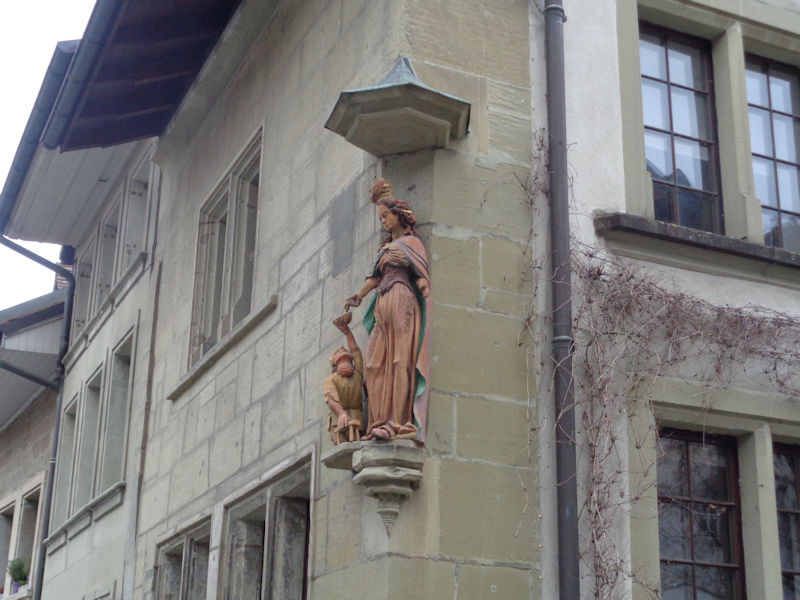
Alms for the less fortunate
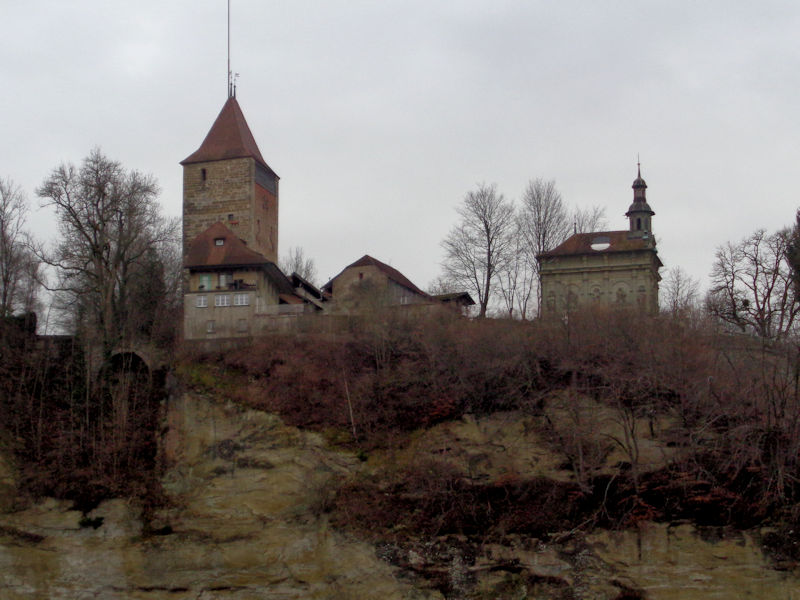
On the far side of the river Sarine, this is the 16th century Tour de Bourguillon over a suburban city gate, and the baroque Chapelle de la Lorette (1647) on the right, described as a smaller reproduction of the Santa Casa de Loreto in Italy.
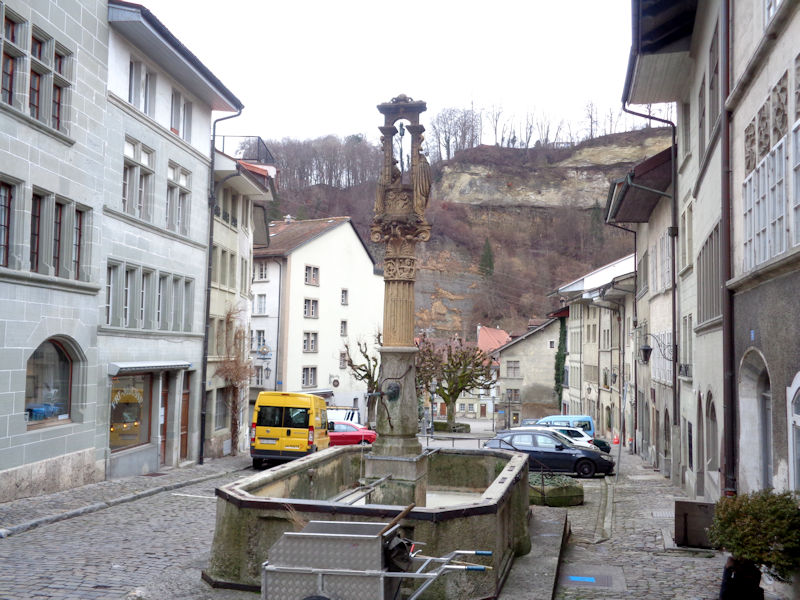
A fountain in the Rue de la Samaritaine near the bottom of the street
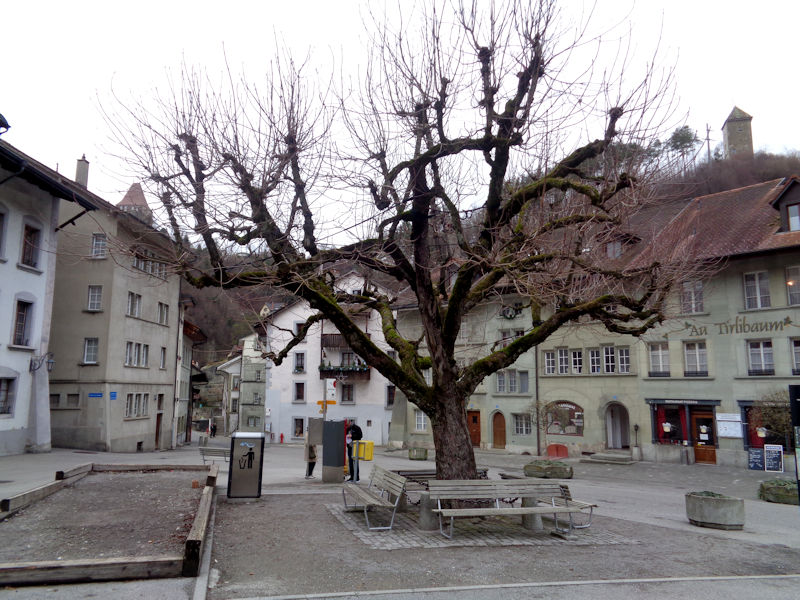
The Place du Petit-Saint-Jean
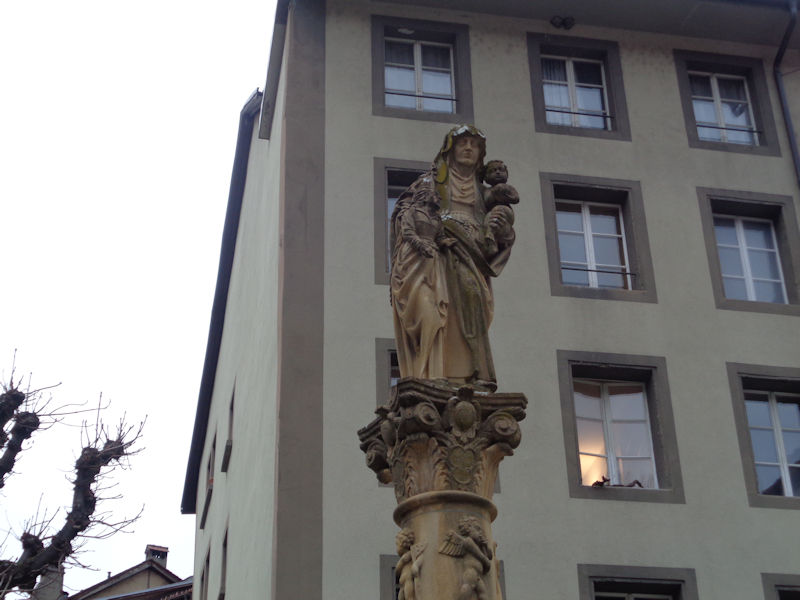
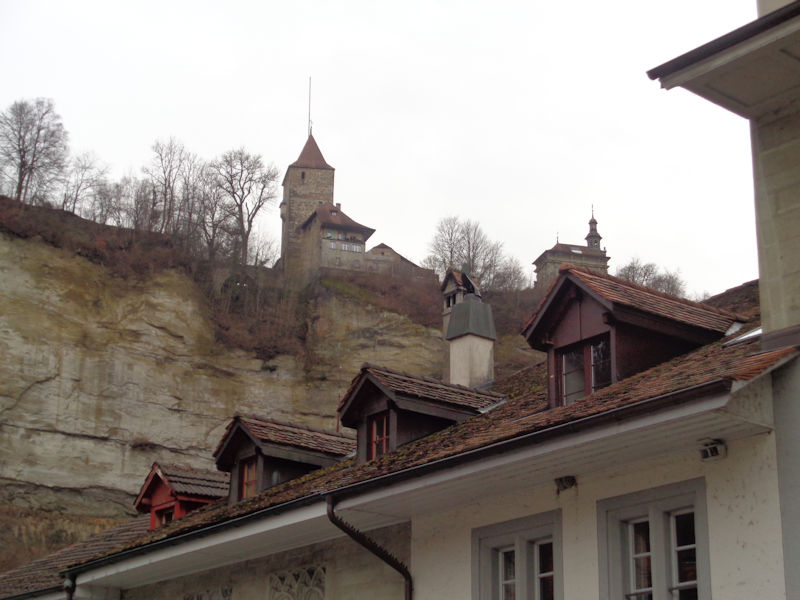
The Tour de Bourguillon
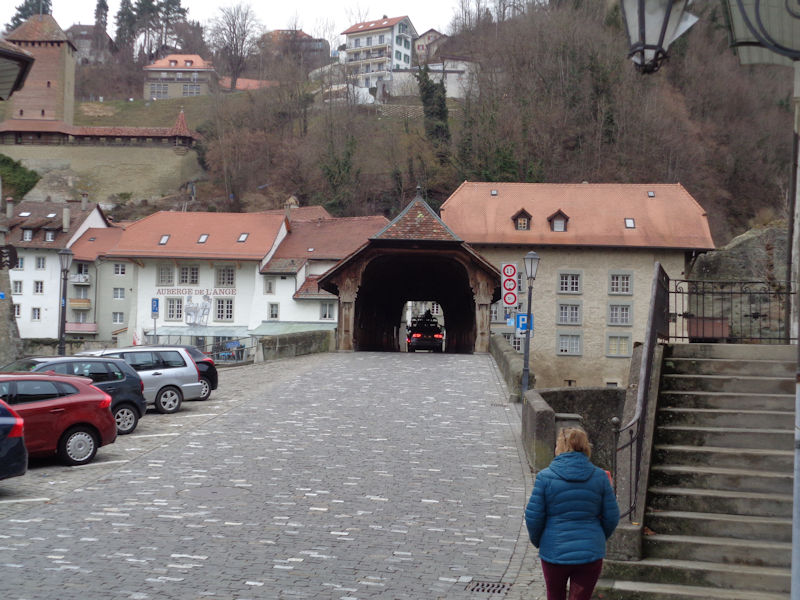
The covered bridge called the Pont de Berne, facing the . . .
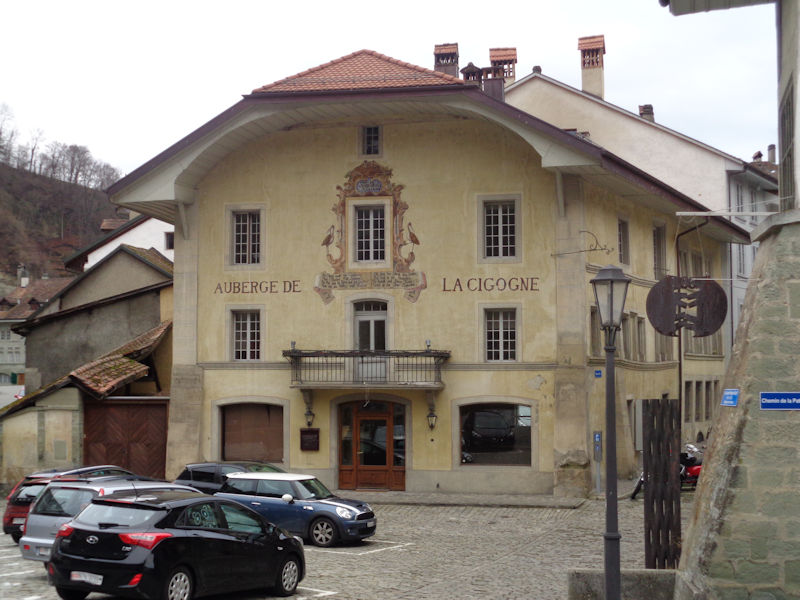
the Auberge de la Cigogne, the Inn of the Stork
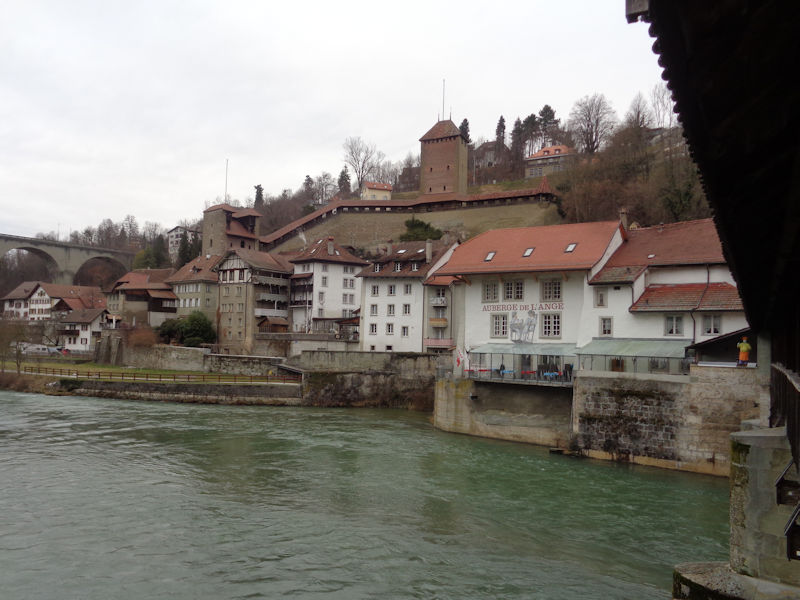
Fortifications along the hillside on the far side of the Sarine
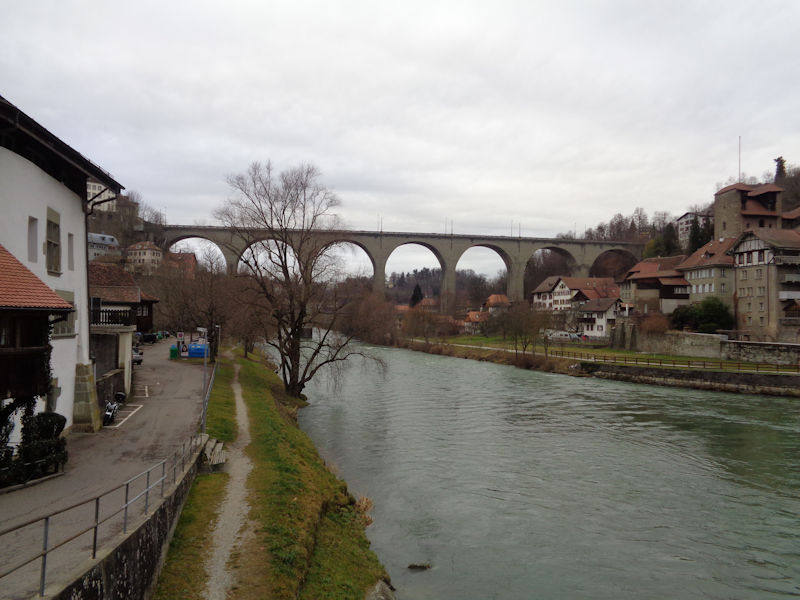
The Pont de Zähringen
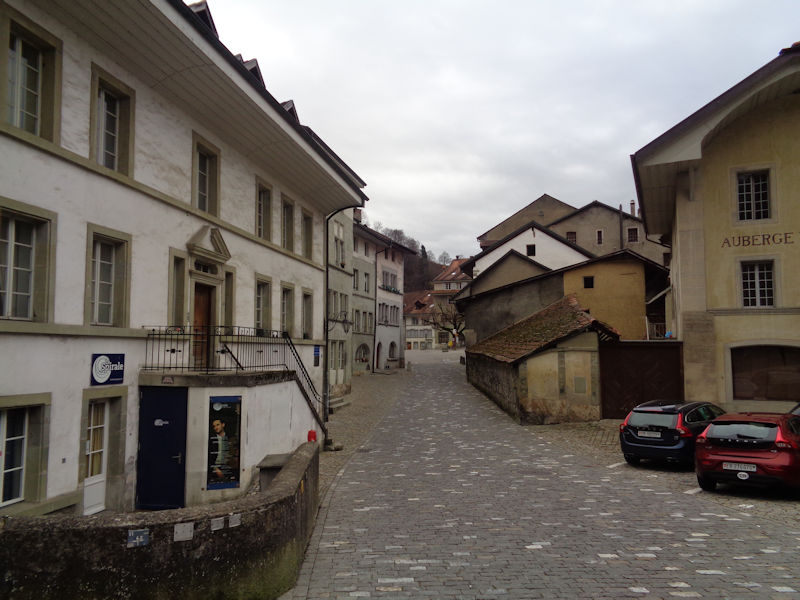
We're making a little promenade along the riverside.
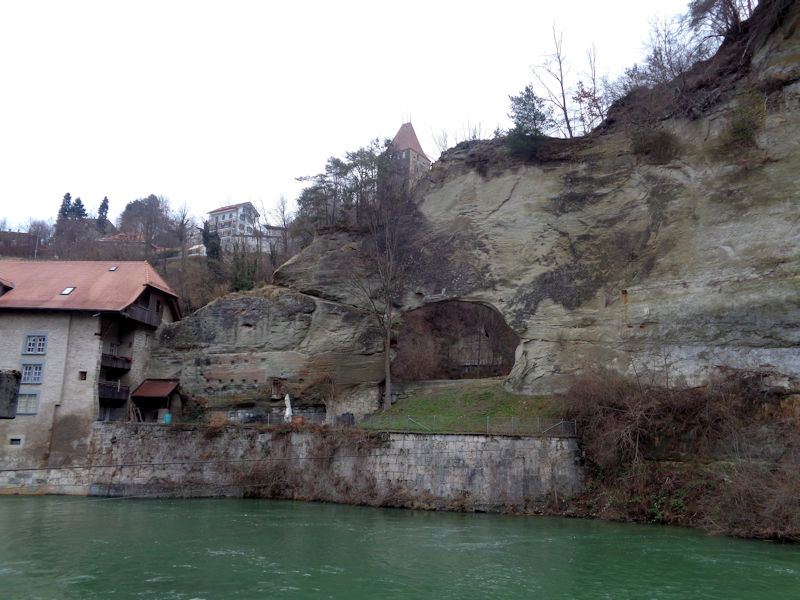
A big hole in the cliff, by the looks of it
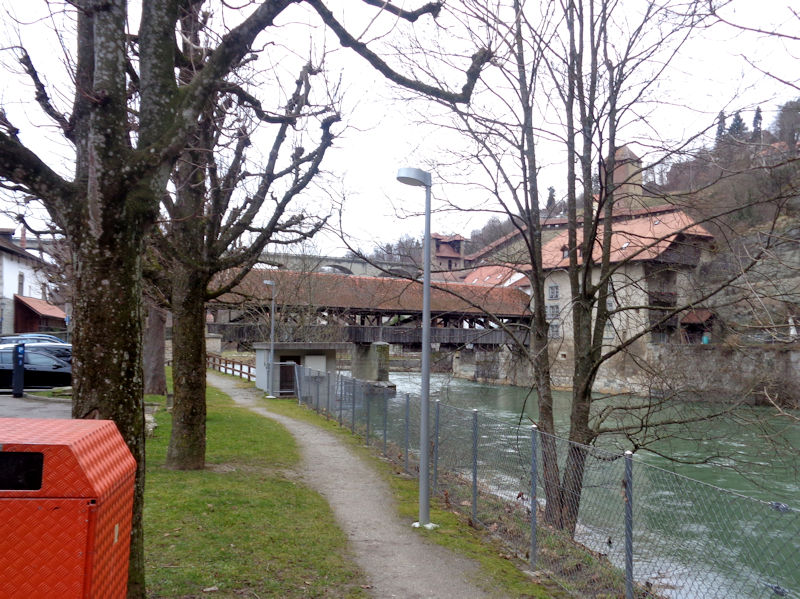
The covered Pont de Berne from the Promenade des Bolzes around the little peninsula of the lower town
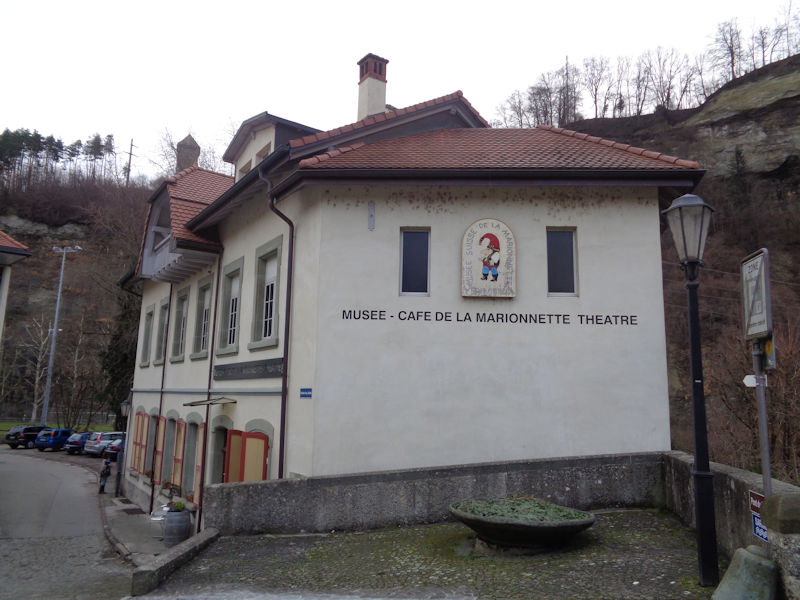
The Musée Suisse de la Marionnette, as we . . .
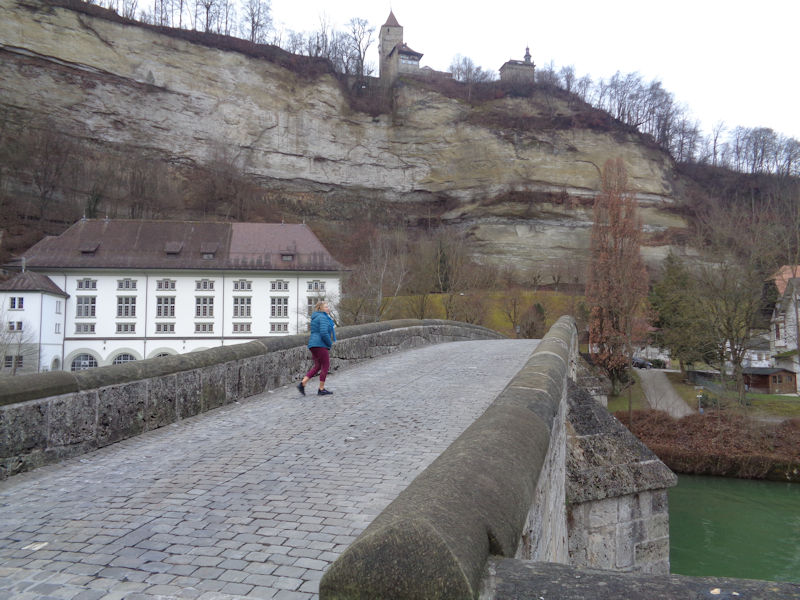
. . . cross the Pont du Milieu to the farther bank.
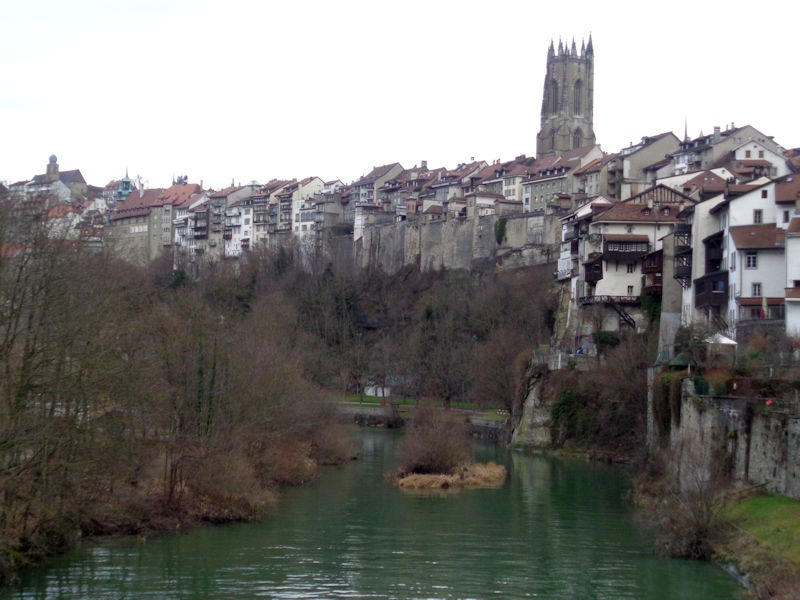
Fribourg from the Pont du Milieu on the river Sarine
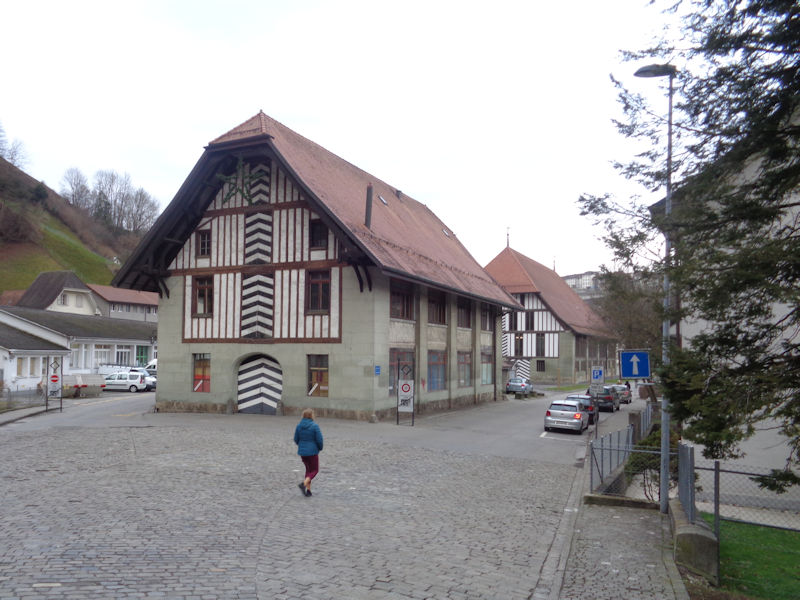
The 'Maison de quartier de la Basse-ville' in the Planche-Inférieure district
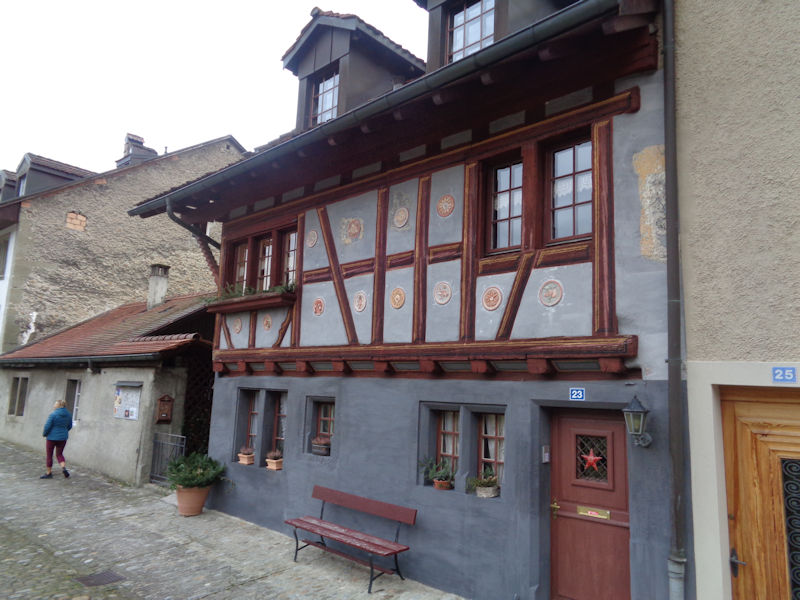
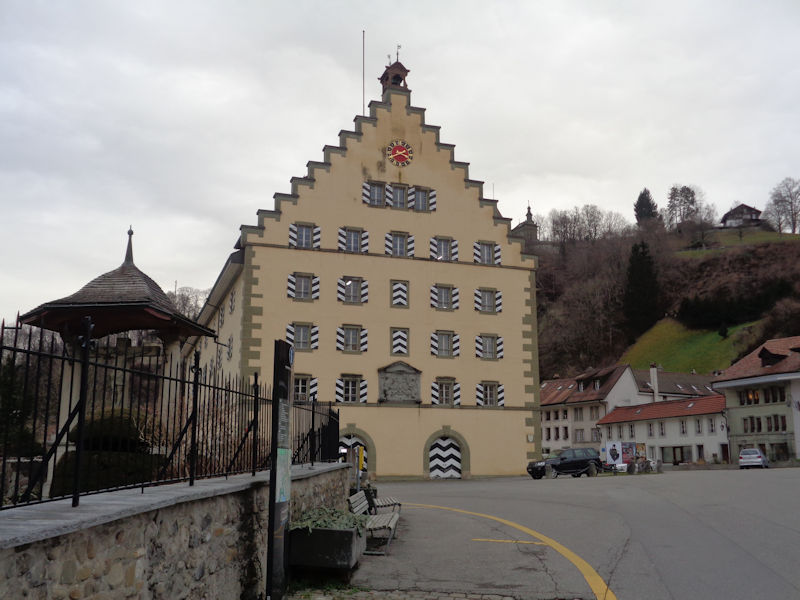
Moving on to the Planche-Supérieure -- that's presently the HQ of the Service Archéologique.
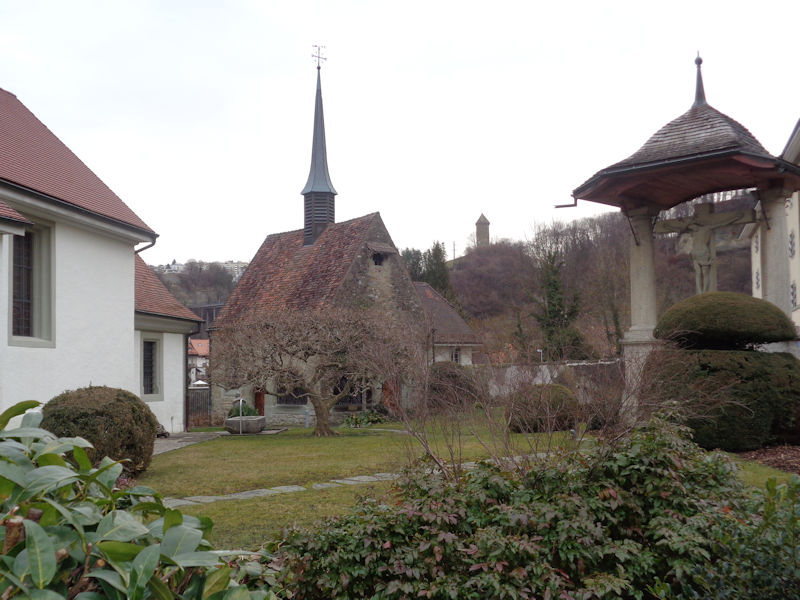
A little chapel alongside the Cure catholique romaine de St- Jean
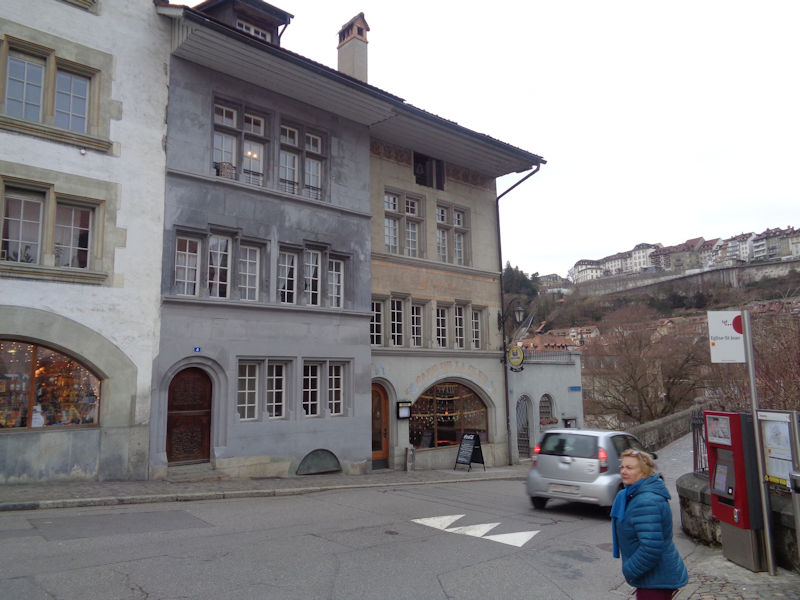
Time to head back up the hill
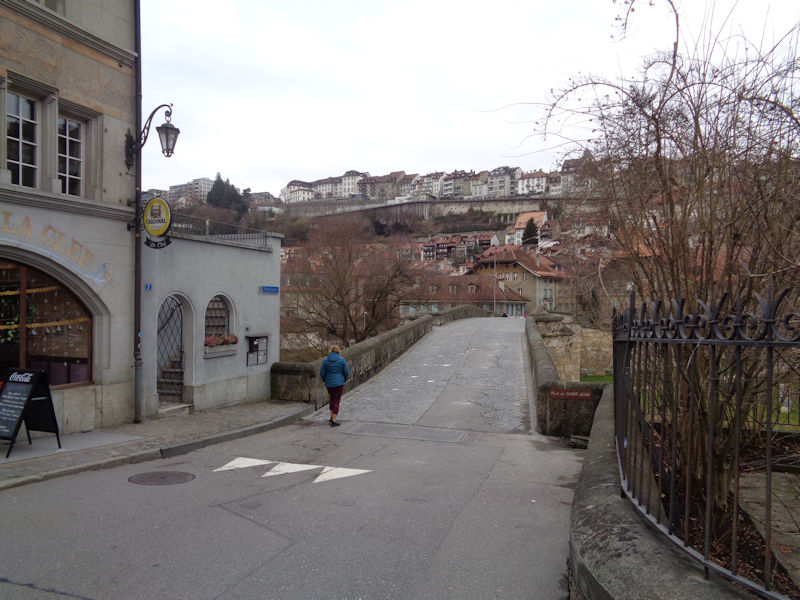
Over the Pont de Saint-Jean
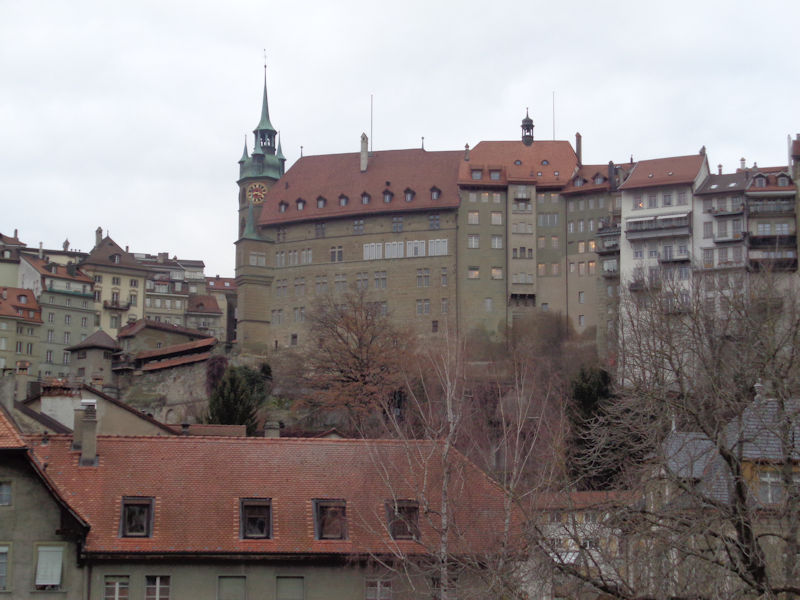
The government buildings up the hill
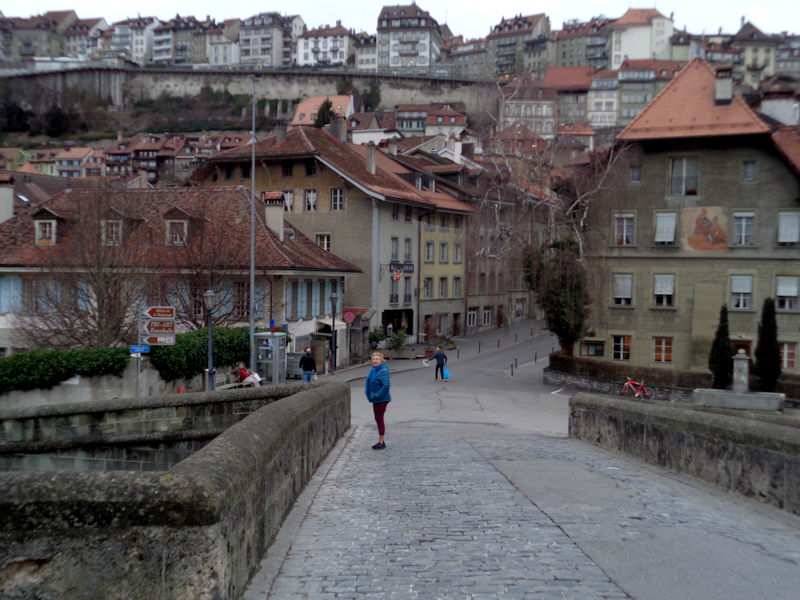
The upper city is looking way way 'upper' at this point.
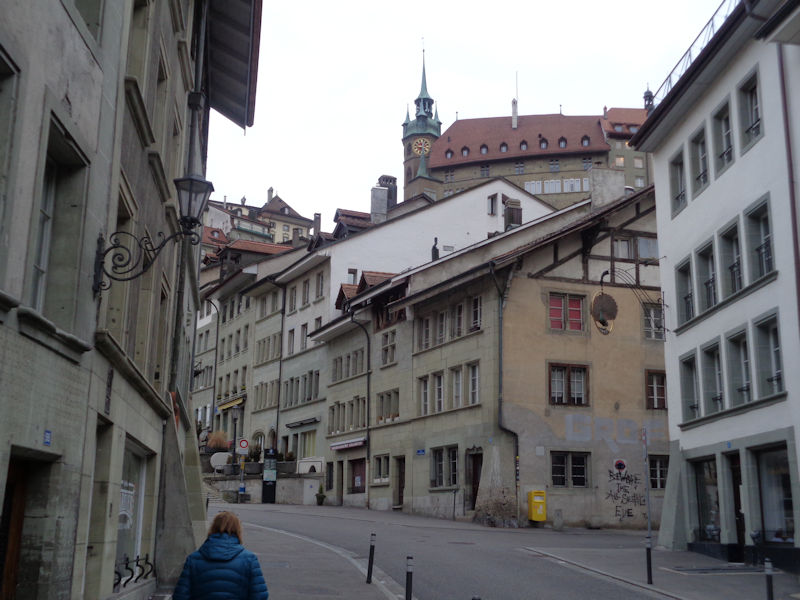
But we persevere.
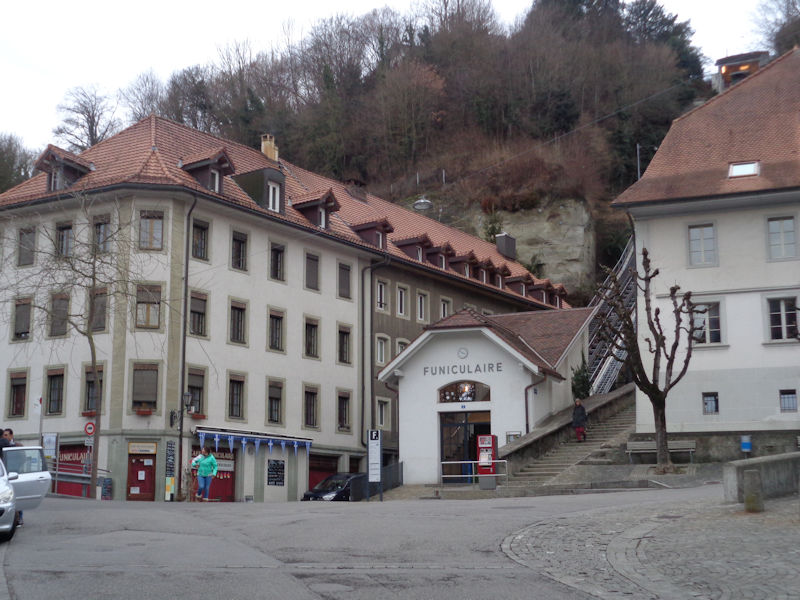
Oh thank goodness.
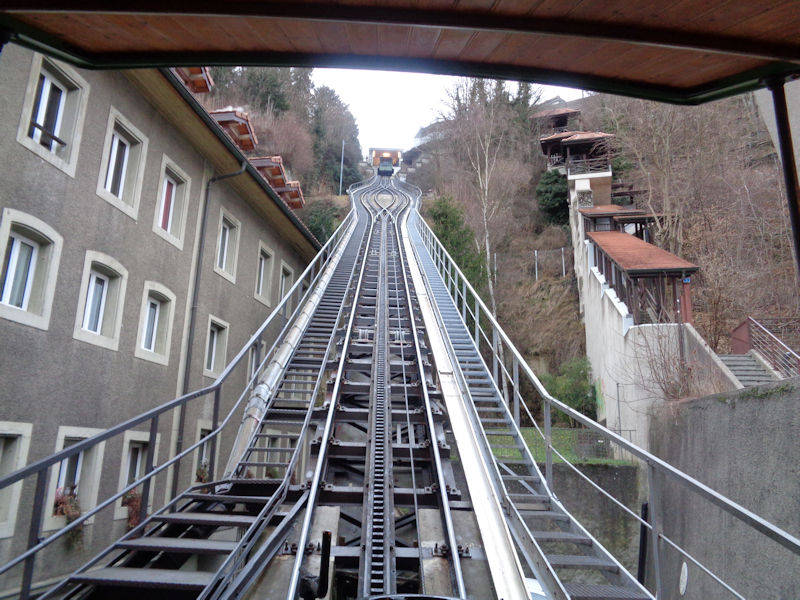
It's not cheap. But it's worth every centime.
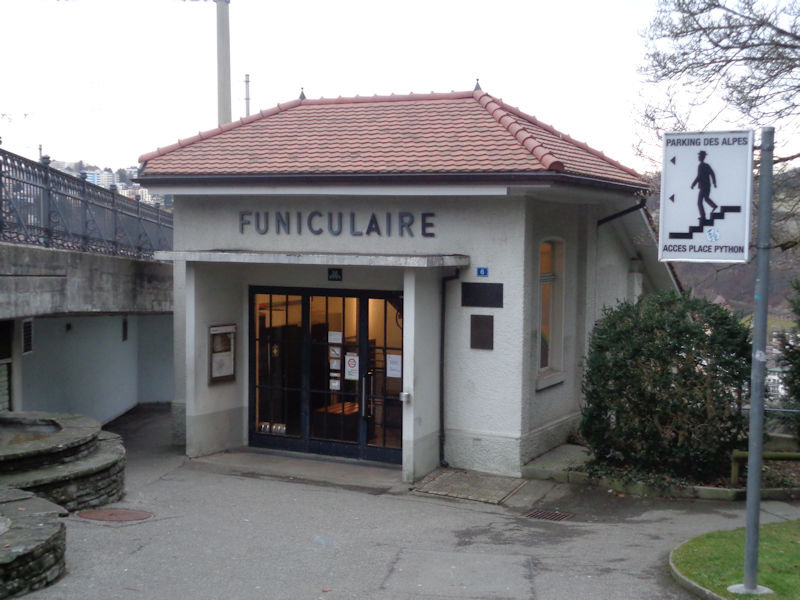
The funiculaire of Fribourg, built in 1899
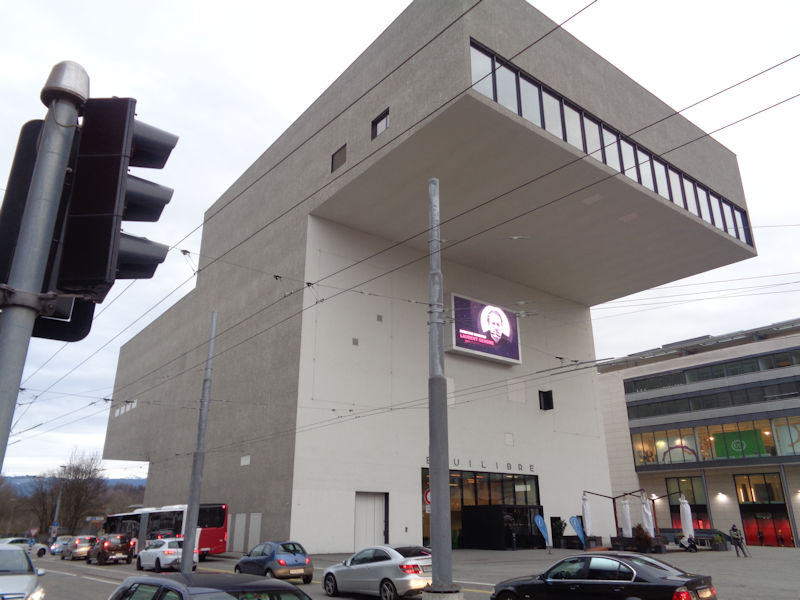
The Théâtre Equilibre, a non-profit event and opera hall inaugurated in December 2011
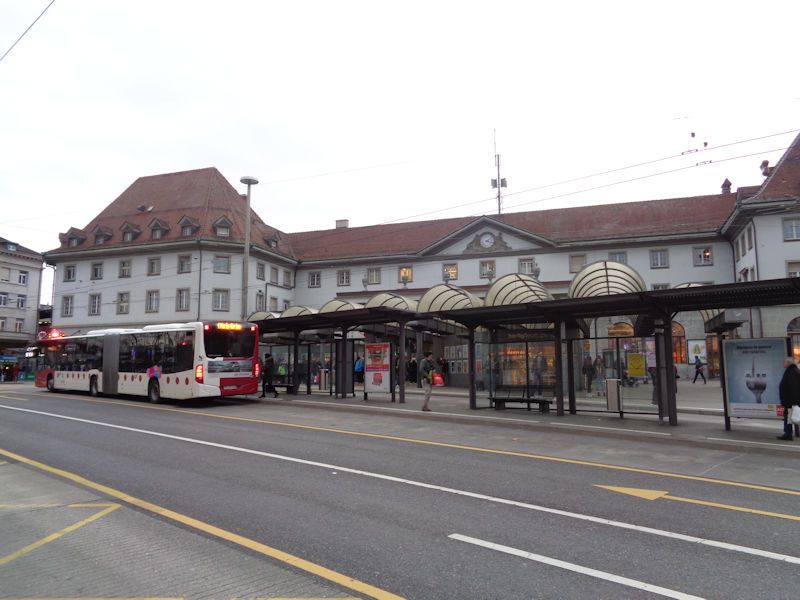
Back to the Fribourg rail station. And ready for dinner.
An earlier visit to Fribourg, with Marlowe in 2003
